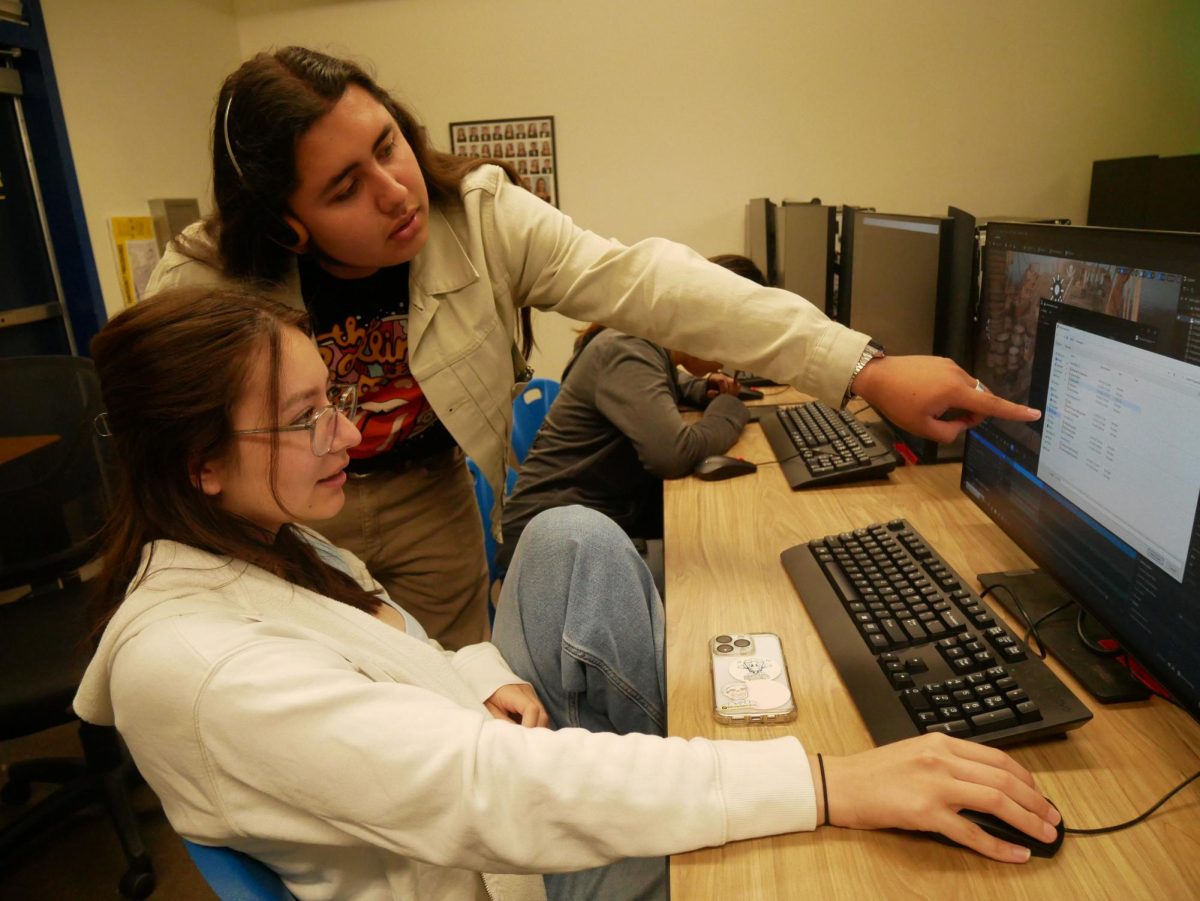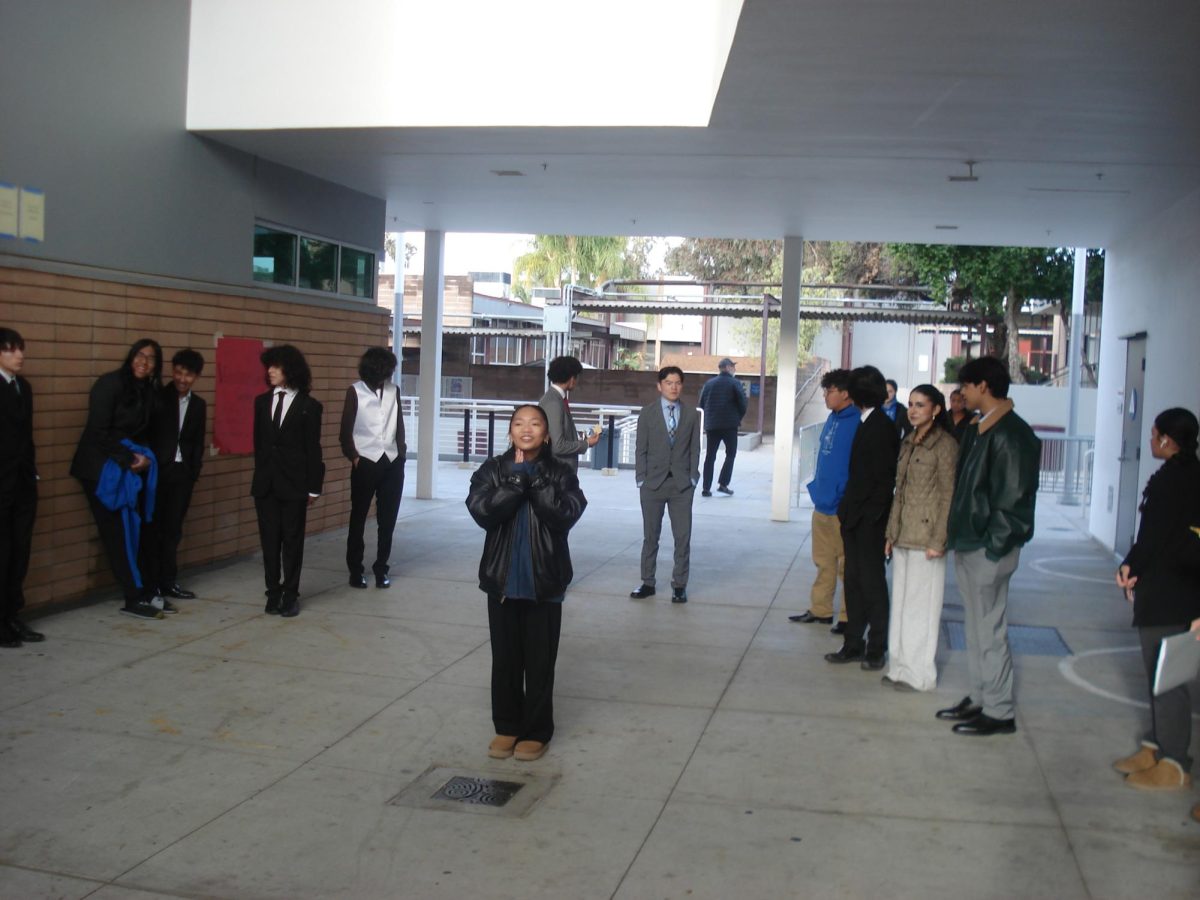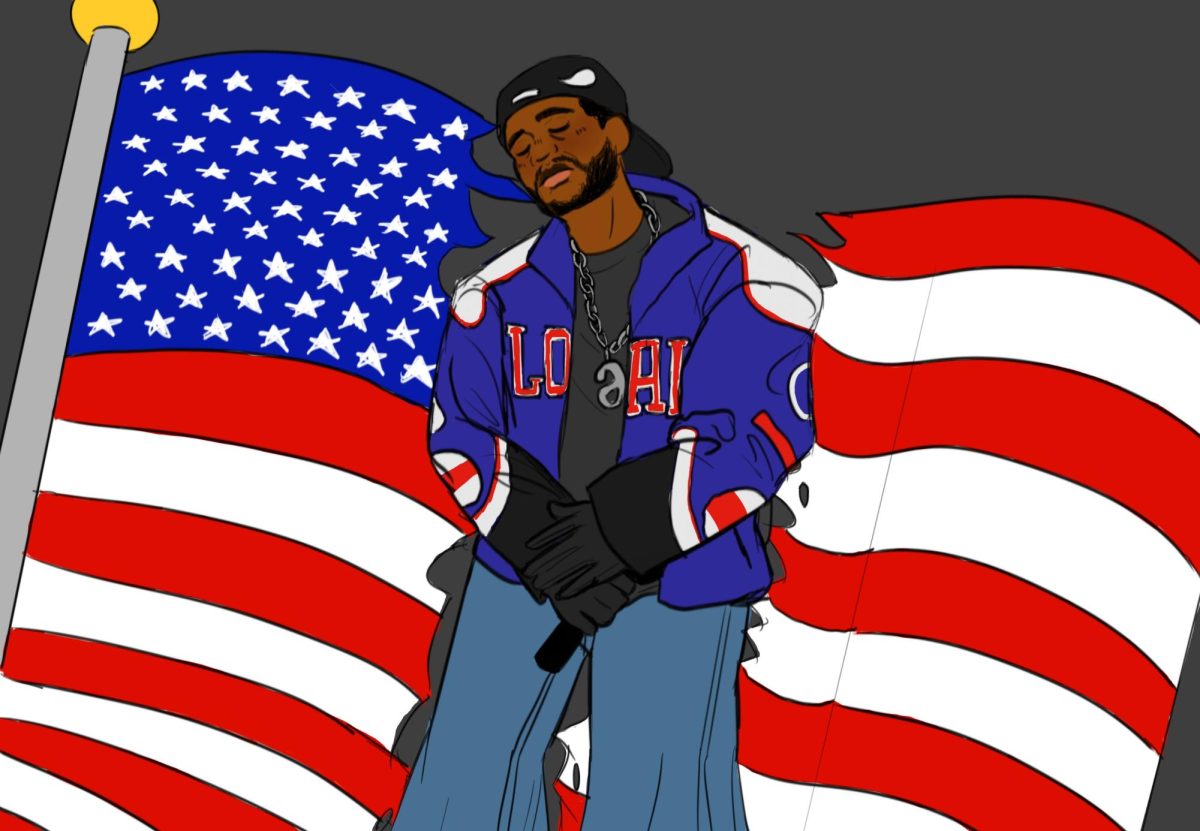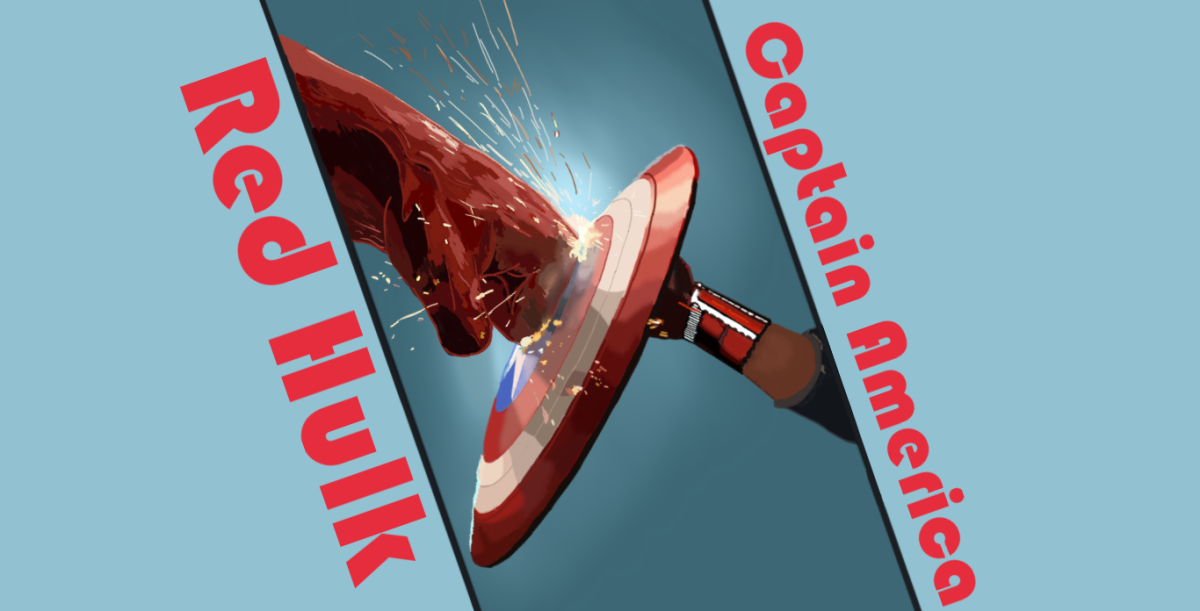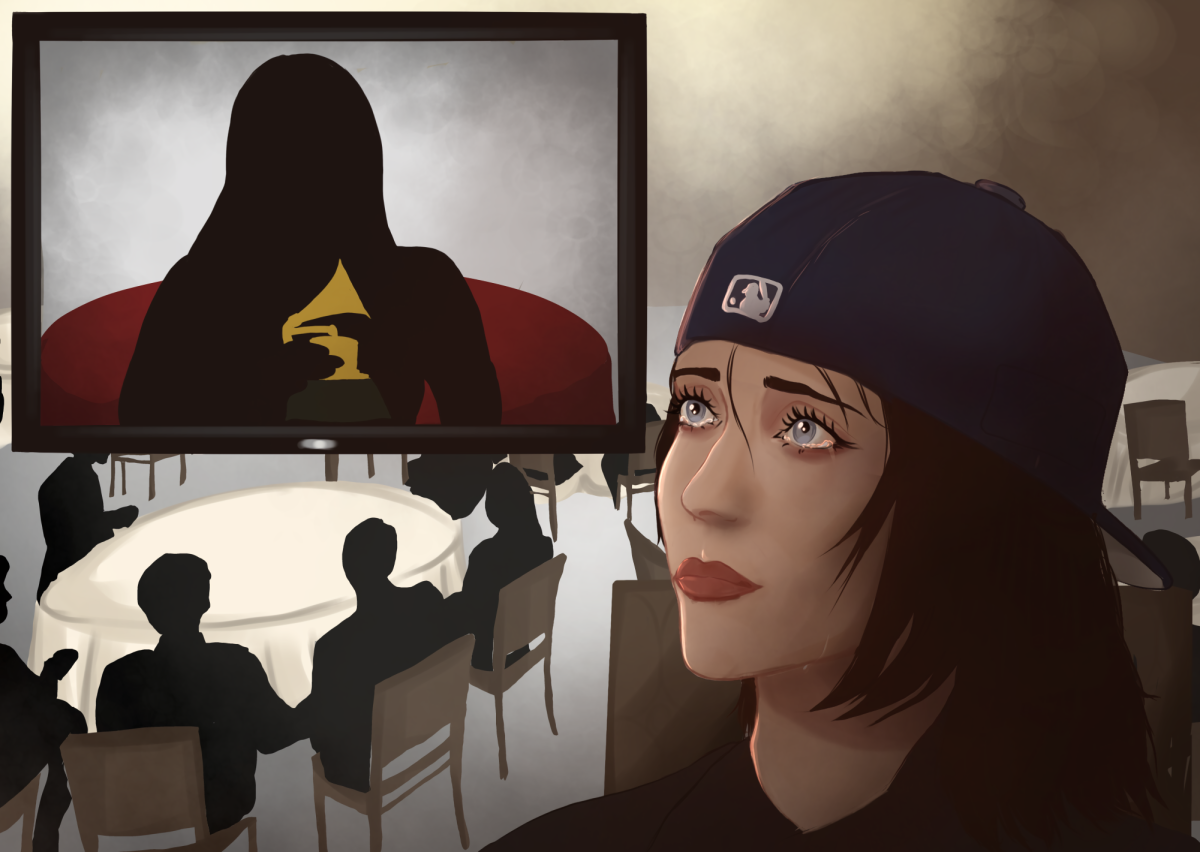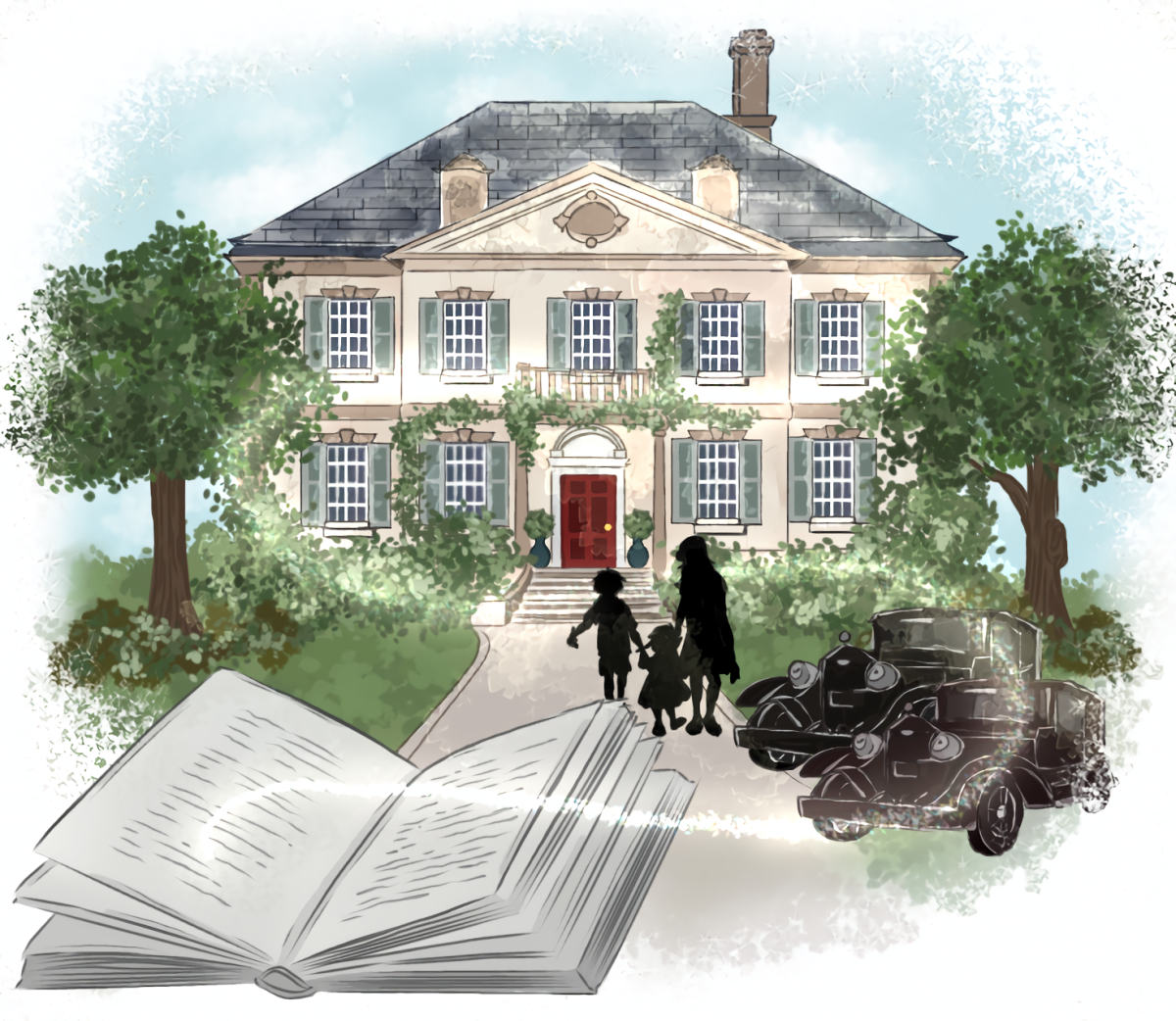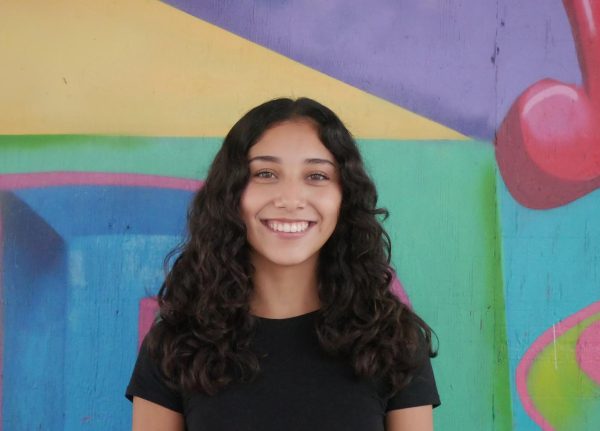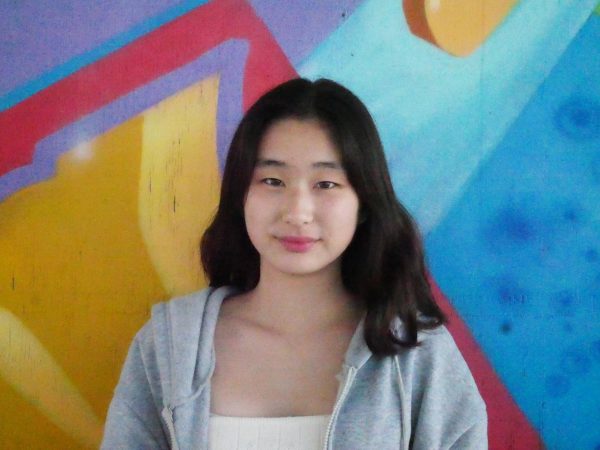Students can enter the world of virtual reality as Bonita Vista High (BVH) presents a one of a kind, Career and Technical Education (CTE) Virtual Production Honors program on campus. Introduction to Multimedia and Bonita Vista television (BVTV) advisor Hugo Martinez, brings a new opportunity for students to interact with virtual reality in a classroom setting. CTE Virtual Production Honors program is a zero period class which allows students to experiment with different types of high-technology that is used in the movie industry.
“[The class] has to do with virtual production, which combines the virtual world and the practical world together and combines them to become a movie or a podcast. A good example of this technology is The Mandalorian movie,” Martinez said.
Martinez initially began the process of planning this class two years ago, after visiting studios and learning about technological changes within the movie industry. He then started the district process of applying for the program through understanding the curriculum requirements with the CTE office’s assistance. After having it approved, Martinez plans to teach this program within the school then expand to other teachers who may be interested in learning about the training process.
“[The new class] provides technical skills that are needed in the [production] industry right now [since] people [might] still be working with older technology. This new technology gives our students the opportunity to go into the workplace and understand how products are made to this day,” Martinez said. “Being able to produce by using these [softwares] gives our students the edge in this upcoming era for [the production] industry.”
The CTE program provides BVH with funding towards a new class, software and equipment to support Martinez and his students. Some of the new technology used in this class is a new software called Unreal Engine which is used to create games like Fortnite. With this program, students interact with digital high resolution graphics that are created from real people being scanned.
“My favorite activity right now has been creating our own [digital] persona. We have limited access to [the type of person]. We could have either male or female sex [but you can customize them] by adding hair, a mustache or different kinds of eyes,” BVTV producer and senior Uriel Lopez said. “You can contort what they look like by [moving] the cheekbones up or down. You have an insane amount of control, and you can make it look like you.”
Another program that is often used in the class is Mo-Sys StarTracker, which is a renowned company that is used by professional video production companies. The software uses a real-time optical camera tracking system which imitates movement within the virtual world. This is one of the units Martinez wants to include in the class for students to produce and act in.
“It is amazing because now you are able to project this virtual world and have a real actor in front of it at the same time. Before, [the process] was filming from a green screen then editing in post production,” Martinez said. “[Instead] this is taking place magically at the same time. The time that it takes to create a production film or any content with video [is minimized] which is very practical.”
The workload of the class is kept to a minimum as most of the time in class is spent working on these assigned projects. There are various projects taking place in each semester where they are required to make a one minute film in their virtual world which requires a certain amount of shots to be made. Although it is a tedious process to create these films, the class has a size of 10 students to help one another.
“It is a small class, so I get to know everyone and we work together even though our projects are individual. We are all [able to] communicate on how we do stuff and then learn from [one] another,” CTE Virtual Production Honors student and senior Emily Zepeda said.
The decision to make this class a zero period rooted from a survey done by Martinez last school year. Since the class is filled with ten high performing students, they decided it would work best if this was available earlier in their schedule. However, this limited time comes with a set of challenges and restrictions.
“This course teaches you communication skills and learning with your peers since we do have a limited time with the instructor. Martinez only teaches for a certain amount of time since it is a zero period, so you have to learn to pay attention. The whole class is only ten students, [so] you get really well acquainted with everyone,” Lopez said.
Martinez’s favorite aspect from the class is witnessing these small groups of students coming together and resolving their issues while learning something new. He reflects on how the students are able to maintain a positive attitude even when facing several challenges with the new software and technology.
“[The class] is supposed to teach us how to navigate through certain virtual programs and work with the technological aspect of it. We [learn] how to manage all the crashing of programs and stuff like that,” Zepeda said.
This new class is a great opportunity for those who desire a filmmaking career. There are several courses offered by Martinez that allow students to follow the pathway and to some day experience working in the film industry. Martinez is especially passionate about this new course and how it crosses paths with new levels of technology.
“Every aspect of the curriculum to me is very exciting because I am looking to see how we can learn new things every time we meet. The whole thing has been a dream come true [since] we have been working on this project for more than two years,” Martinez said. “When you see it as a reality, having a studio and seeing [the students’] progress in this virtual world, creating movies, is so exciting. I feel so fortunate to be part of it.”

